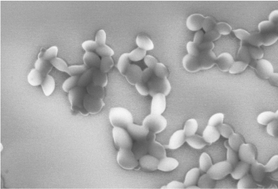Effects of nanoconfinement on the morphology and reactivity of organic materials
Abstract
When organic materials are placed in environments which physically confine the materials at the nanometre scale, interfacial effects and confinement-induced loss of entropy can significantly alter materials’ properties such as the glass transition temperature as well as the nanoscale morphology as compared to a ‘free’ system. In block copolymers, nanoconfinement leads to a range of unusual self-organized nanoscale morphologies. In this article, attempts to induce nanoconfinement effects in new polymer systems as well as at interfaces will be highlighted and some possible future implications for organic synthesis and biology will be discussed.


 Please wait while we load your content...
Please wait while we load your content...